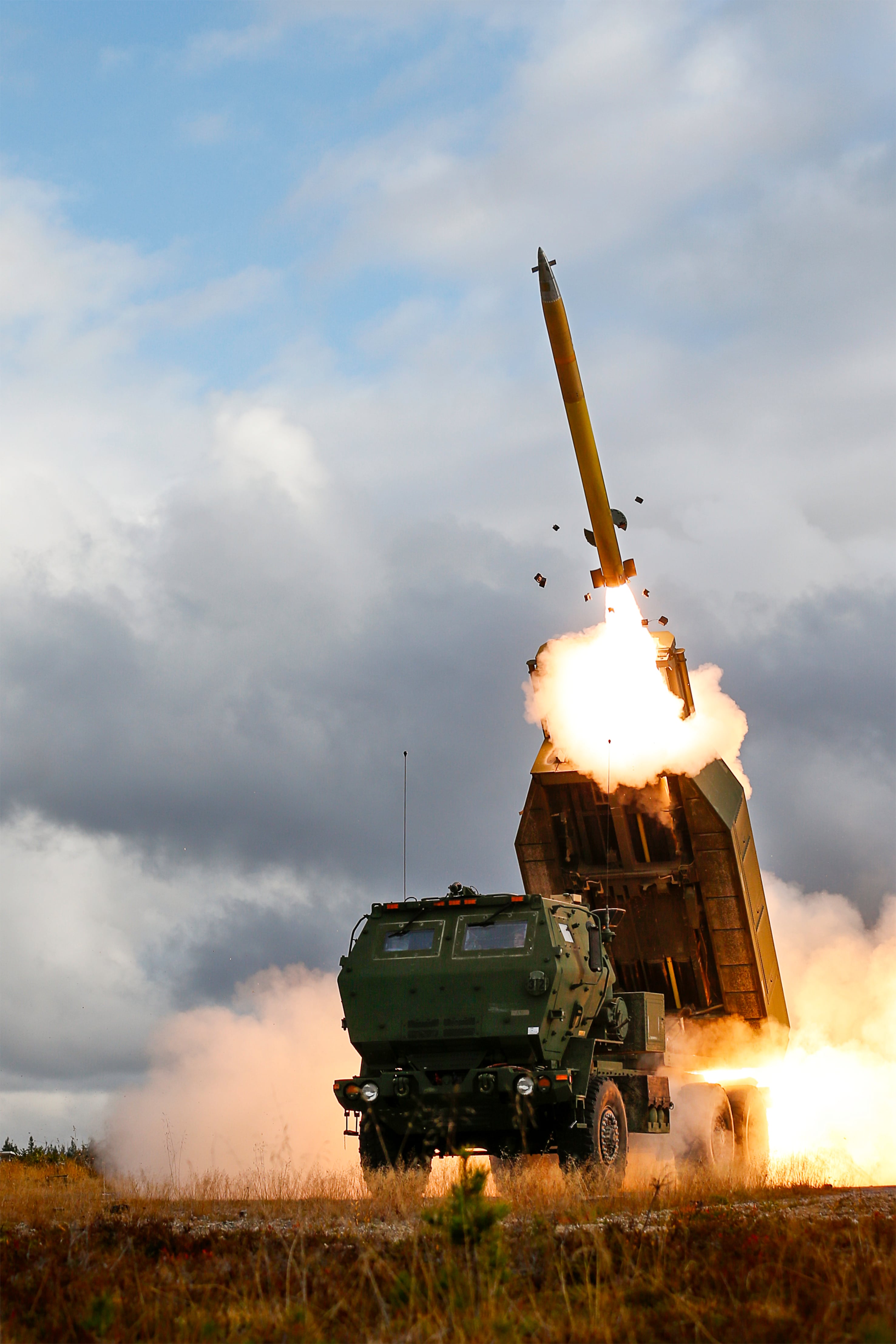SIMI VALLEY, Calif. ― As donations to Ukraine strain allied munitions stockpiles, the U.S. Army is seeking a “dramatic” ramp up in monthly production of 155mm artillery shells over the next three years, its chief weapons buyer said Saturday.
Those plans hinge on emergency spending for Ukraine that Congress already approved, but also on the more than $600 million in industrial investments in the next tranche of aid and multiyear authorities in the annual defense policy bill still under debate in Congress, according to Doug Bush, the assistant secretary of the Army for acquisition, technology and logistics.
“Funding is already in place, contracts are underway to basically triple 155mm production,” Bush told Defense News on the sidelines of the Reagan National Defense Forum. “There’s funding on the Hill, in the supplemental, to more than double that again. That would take a period of years.
“We want to be able to build our stocks not just where we started the war, but higher. We’re posturing for a pretty ― over a period of three years ― a dramatic increase in conventional artillery ammunition production.”
Army Secretary Christine Wormuth separately told reporters that the U.S. will go from making 14,000 155mm shells each month to 20,000 by the spring and 40,000 by 2025.
The service in recent days awarded contracts to three private companies to produce and deliver 155mm artillery: General Dynamics Ordnance and Tactical Systems, American Ordnance, and IMT Defense.
The push comes as the U.S. has supplied Ukraine with more than 1 million artillery rounds, and as Pentagon officials see the war in Ukraine continuing indefinitely, further draining stocks for the U.S. and allies. Bush said it’s unclear what the Ukrainian military’s mid- and long-term needs will be, and the U.S. Army wants to be ready.
“We are in a position to support Ukraine, but it’s more the mid and long term,” Bush said. “By creating this capacity ... if this war goes three or four years, we’ll be in a position to just vastly outproduce the Russians all by ourselves ― and if you combine that with our allies, then we’re just dwarfing their capability. They won’t be able to keep up.”
Bush noted the Army is paying to expand and improve production capacity at its ammunition plants in Scranton, Pennsylvania; Kingsport, Tennessee; and Middletown, Iowa. Army officials also aim to contract with defense firms outside the U.S. for artillery shells for Ukraine, a step in line with talks between senior Pentagon officials and their foreign counterparts about greater industrial cooperation.
Beyond artillery shells, Bush said he is pushing to double production for the most in-demand precision munitions for Ukraine: Guided Multiple Launch Rocket System rounds for the Lockheed Martin-made High Mobility Artillery Rocket System and Javelins, the portable anti-tank weapon jointly made by Lockheed and Raytheon Technologies.

The Senate-passed version of the sweeping 2023 National Defense Authorization Act aims to authorize massive purchases of high-priority munitions using multiyear contracts to help Ukraine fight Russia and to refill U.S. stockpiles; the bill would also provide waivers to speed up the process. A compromise bill was still under negotiations between the House and Senate on Monday.
While approval for multiyear purchasing authorities for munitions through the NDAA would be the starting gun for the Army to begin planning those buys, the effort must also get approval in next year’s appropriations legislation, Bush said.
The defense industry’s lack of robust production capacity for ammunition is a product of historically “lumpy” purchases by the military, Ellen Lord, a former Pentagon acquisitions chief, told reporters. She said that without steady demand over time, defense firms haven’t been making capital investments in their plants.
“So we have to be clear about the demand signal and the volumes over multiple years, and then industry will develop that capacity,” said Lord, who now works in the private defense sector. “But industry [executives] can’t go to their board of directors and say: ‘Hey, I think there’s going to be a lot of orders out there, so let’s spend $50 million to build a plant and hope.’ ”
At the conference, Raytheon’s chief executive, Greg Hayes, said that the war’s consumption rates so far have vastly outstripped industrial capacity. Since the start of Russia’s invasion of Ukraine in February, donation efforts have used up five years of Javelin production and 13 years of production for portable anti-aircraft Stinger systems, he said.
“So the question is: How are we going to resupply, restock the inventories?” Hayes said.
Speaking on a panel with Hayes, Wormuth said the contracts for a production boost have already begun. She pointed to the service ‘s $1.2 billion award to Raytheon for six National Advanced Surface-to-Air Missile System batteries for Ukraine and a $431 million award to Lockheed to replenish donated HIMARS launchers.
“Thanks to Congress ... we’ve actually pushed $6 billion out to industry to help us with replenishment, which is going to enable us to not only continue to supply Ukraine but also to replenish our own stocks,” Wormuth said.
The Army, she added, is now “working closely with industry to increase their speed and capacity” and resolve “chokepoints” in supplies.
”We’re working on it, and we’re going to ramp up,” she said, adding that the Army is also compressing training for Ukrainians to use donated weapons.
Hayes credited Army and Pentagon officials with compressing contracting and delivery processes, from months to days, for NASAMS ― once U.S. President Joe Biden made the decision to send them.
But Hayes also said that because NASAMS, which are co-produced with Norway, were infrequently manufactured, “we’re going to have ramp up production from zero here.”
Joe Gould was the senior Pentagon reporter for Defense News, covering the intersection of national security policy, politics and the defense industry. He had previously served as Congress reporter.





